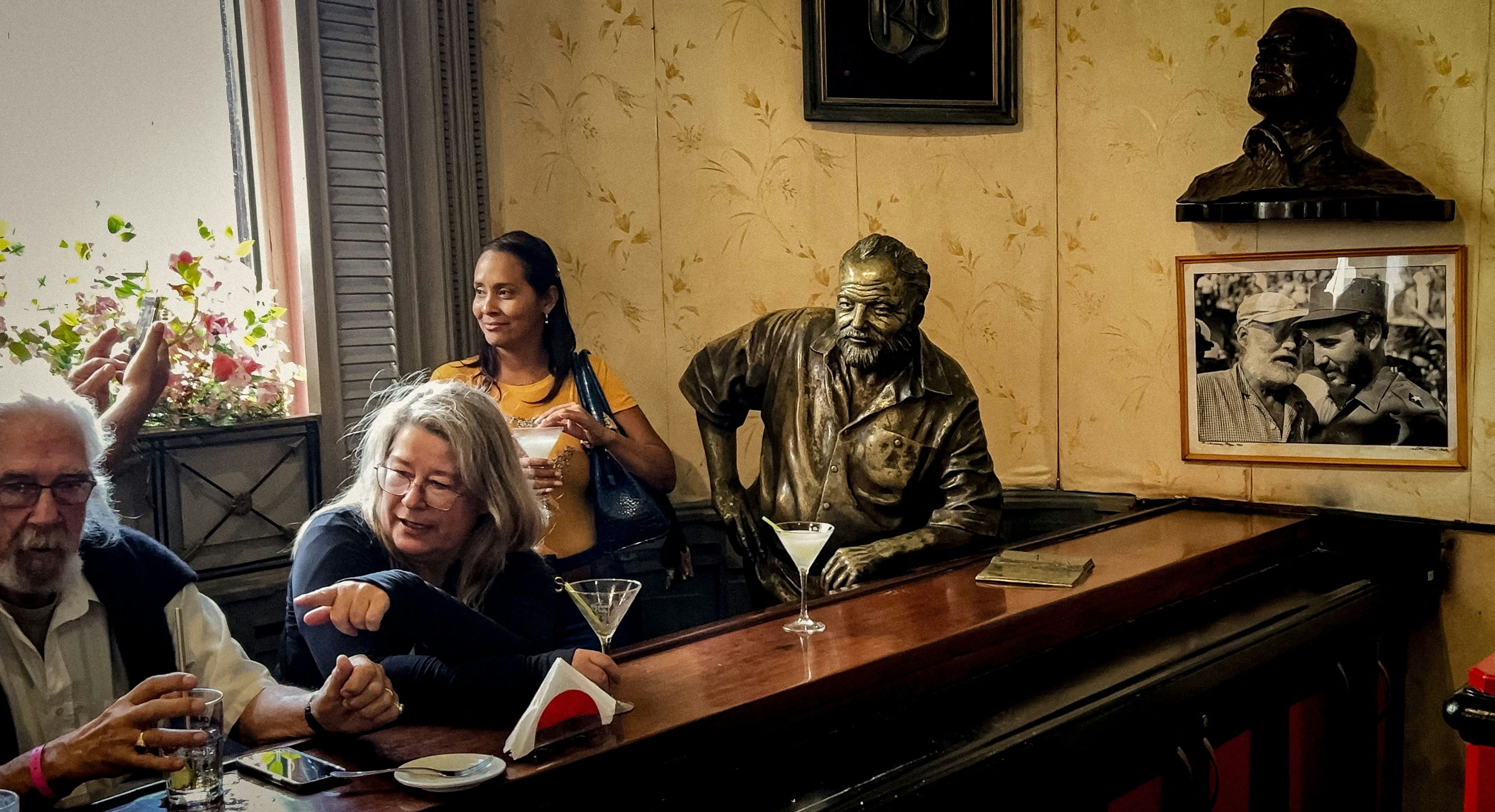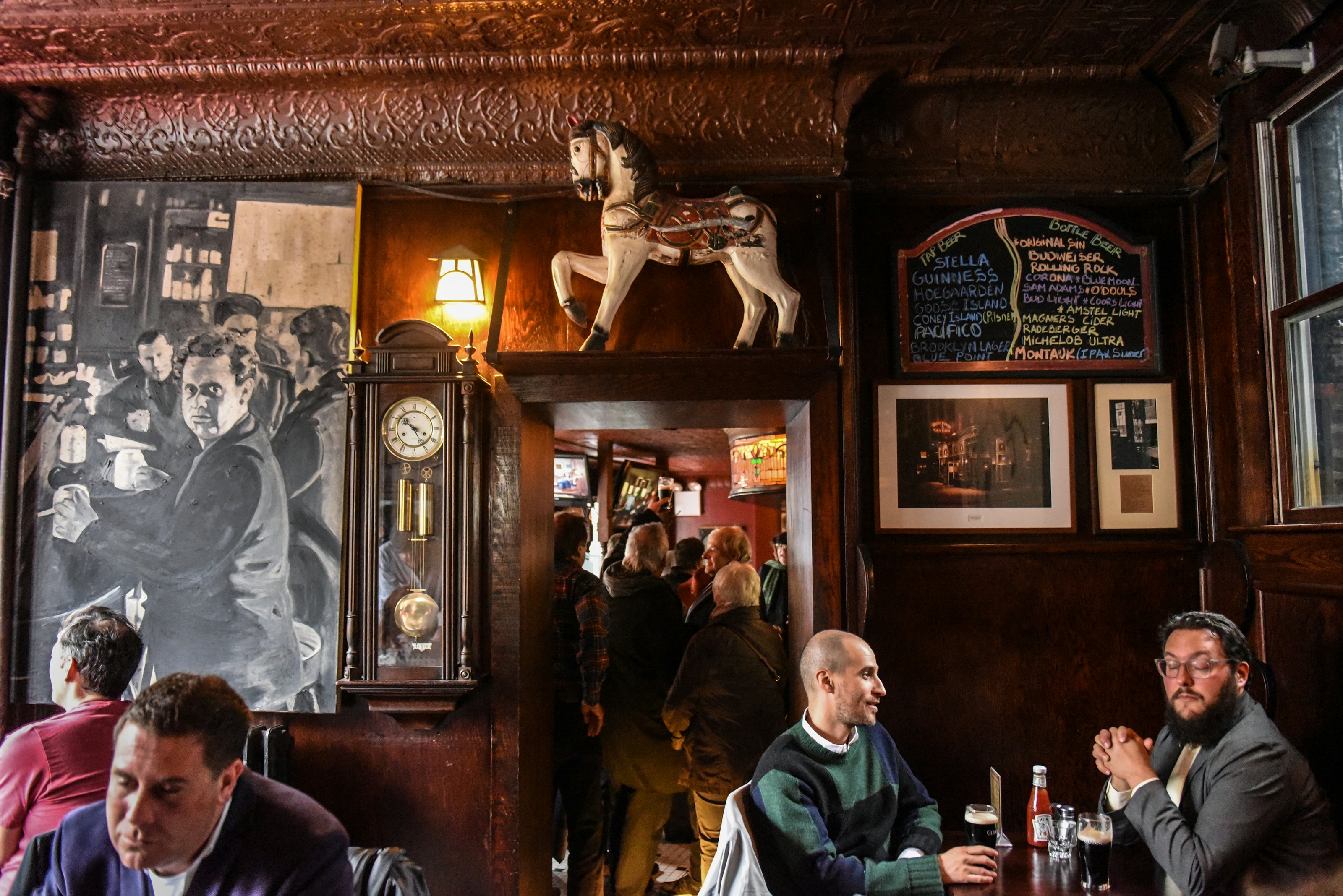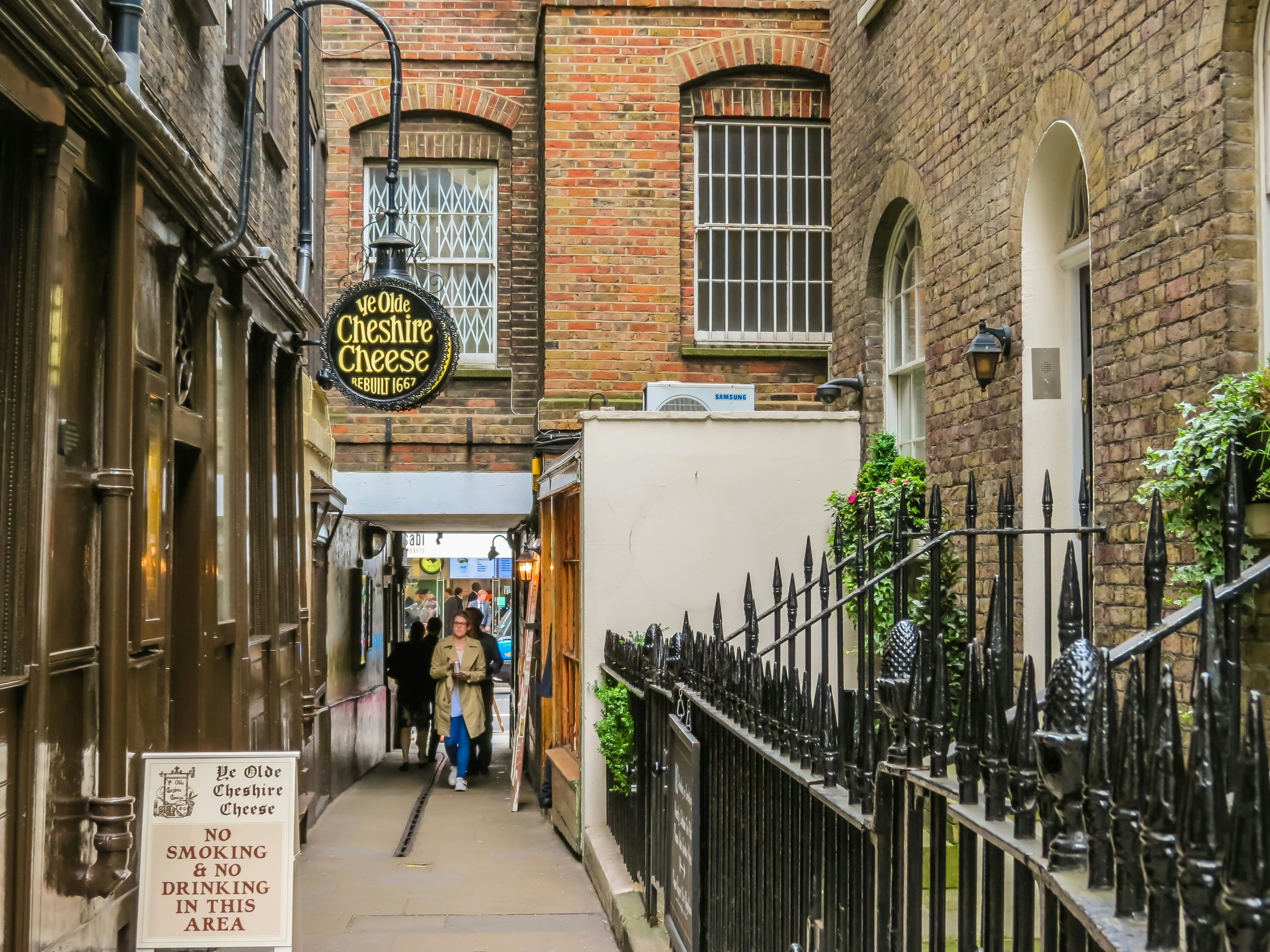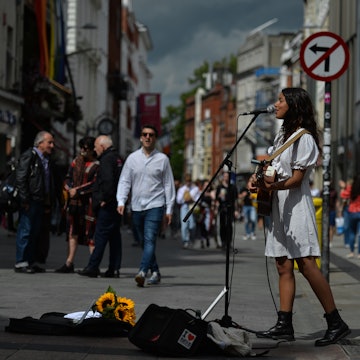
10 timeless literary bars around the world


Bars like New York’s White Horse Tavern are known as much for their literary regulars as their cocktails © Stephanie Keith / Getty Images
From Paris to Buenos Aires, you’ll want to settle in and raise a glass at these famous literary bars, notebook at the ready.
It’s true: saloons, pubs, clubs and other welcome watering holes tend to be magnets for writers. Perhaps these necessarily solo practitioners seek intellectual and social stimulation in the warm environs of a bar. Perhaps they’re there to observe, seeking material for their next great novel or essay. Perhaps they...just need a drink.
Around the world, a few long-standing establishments have drawn generations of writers – and have counted some of the most esteemed literary figures in history as regulars. Here are 10 famous literary bars at which you’ll want to settle in and raise a glass, notebook at the ready.

1. El Floridita, Havana, Cuba
In continuous business for some two centuries, El Floridita is best known as a favorite haunt of famous Havana resident Ernest Hemingway. This bar in Cuba’s capital was most famous for its daiquiris; Hemingway, being a (famously thirsty) cocktail connoisseur, requested his with no sugar and double the rum. This became known as the Papa Doble – and is now El Floridita’s signature cocktail. Papa himself is memorialized as a life-sized statue at the bar. Throw back a couple of those daiquiris and you might actually believe that he is still there holding court with other members of his crew, such as Errol Flynn and Gary Cooper.

2. Vesuvio Café, San Francisco, USA
In San Francisco’s North Beach neighborhood, Vesuvio Café was a popular hangout for members of the Beat Generatio – including writers Jack Kerouac, Allen Ginsburg and Neal Cassady – and in is conveniently located next door to the legendary City Lights Books, which was opened by Lawrence Ferlinghetti in 1953. Stroll through the pedestrian-only alley next to the welcoming bar and admire the colorful murals with poetry and quotes from literature. Then, channel your inner beatnik: order a Bohemian Coffee, climb the stairs to the second floor, and claim a seat that overlooks the bar below. This is where history was made. Dig it?

3. Café Tortoni, Buenos Aires, Argentina
Café Tortoni drips with the faded glamor and stylish melancholy that pervades Buenos Aires. It’s perhaps the most famous of the city’s bares notables, a group of beautiful old cafes where sandwiches de miga (crustless sandwiches) and facturas (pastries) are served with considerable pomp by bow-tied waiters. Leading lights of Argentine arts and letters were known to congregate at Tortoni, including story-story master Jorge Luis Borges, poet Alfonsina Storni and great composer of the tango Carlos Gardel, who held court at a table by the front window. Today, the creative spirit lives on in a downstairs space where poetry readings, jazz jam sessions and tango performances regularly take place.
4. The Horse You Came In On Saloon, Baltimore, USA
Edgar Allan Poe visited many taverns in his lifetime, but The Horse You Came in On Saloon is reckoned the last place that he drank before he died: a sign above the door even claims the spot as “Poe’s Last Stop.” Located in the Fell’s Point Historic District, this dive bar was founded in 1775 and is the oldest joint in Baltimore – as well as the only bar in Maryland to have operated before, during and after Prohibition. The place stays true to its name, with such details as barstools featuring saddle-shaped seats.

5. Café Louvre, Prague, Czech Republic
A Parisian-style café and billiard hall in Prague, Café Louvre first opened in 1902 and quickly became a meeting place for artists, writers and intellectuals. Among its patrons was the novelist and short-story writer Franz Kafka, who was a member of a philosophical circle that met here. Take the grand staircase up to the first floor, where you’ll be greeted by high ceilings and a luxurious interior that oozes belle-époque elegance. Closed and condemned in the Communist era as a “bourgeois” institution, it reopened in 1992 after the Velvet Revolution and quickly caught on again.

6. Les Deux Magots, Paris, France
In the chic St-Germain-des-Prés neighborhood, this storied cafe is hardly bohemian these days. But while you’ll pay top euro for a café crème at Les Deux Magots, feeling the pull of intellectual history is well worth the premium. Starting in the late 19th century, leading literary lights have gathered at the sidewalk tables to smoke cigarettes, sip absinthe and exchange ideas here. Its roster of regular patrons has included the Surrealists, Jean-Paul Sartre and Simone de Beauvoir, Pablo Picasso, James Joyce and other towering figures who turned Paris into a hub of world culture.

7. White Horse Tavern, New York City, USA
Walking around New York City’s West Village, you’ll see no shortage of wordsmiths tapping on their laptops in the area’s many coffee shops. They have big shoes to fill: the neighborhood has been a center of literary culture in the USA – and the entire world – since the 19th century. That legacy lives on at the historic White Horse Tavern, which has been in operation since 1880 and which first became a famous bookish hangout in the 1950s. A bit like the West Village itself, the White Horse’s current incarnation can draw a ritzy, fratty crowd. But as you sip a pint at its gorgeous carved-wood bar, it’s not hard to conjure the ghosts of hard-drinking poets Dylan Thomas and Delmore Schwartz, regulars whose ghosts are still said to haunt the joint to this day.

8. Ye Olde Cheshire Cheese, London, UK
Step into this subterranean pub, wedged in an alley off London’s Fleet St, and take a step back in time. Dating to 1538, Ye Olde Cheshire Cheese was reconstructed after the Great Fire of 1666. It was a favorite of Charles Dickens, who even alluded to the pub in A Tale of Two Cities. He was only one of the many writers who were regulars at the place: figures from Mark Twain to Sir Arthur Conan Doyle to PG Wodehouse also wet their whistles here. Sprawling over four floors, the pub features a series of lower-level chambers, cellars and tunnels that beg to be explored.

9. Carousel Bar, New Orleans, USA
The colorful Carousel Bar inside Hotel Monteleone in New Orleans’ French Quarter has drawn numerous writers seeking inspiration in one of the USA’s most atmospheric cities. Thanks to the patronage of such scribes as Truman Capote and Tennessee Williams, in 1999 it was even named an official “Literary Landmark” by the United for Libraries. As they sip their Sazeracs, guests at the merry-go-round-like bar will make a full rotation every 15 minutes. Some writers, like Eudora Welty and William Faulkner, were so enthralled with the carousel that they wove it into their stories. You’ll likely be, too, as you enjoy live jazz music and a signature Vieux Carré cocktail.
10. Davy Byrnes Pub, Dublin, Ireland
It’s easy to draw up a list of bars where famous novelists have appeared. But what about one that makes an appearance in a famous novel? While the current incarnation probably wouldn’t be James Joyce’s kind of place, Davy Byrnes merits a stop on any bookworm’s tour of Dublin given its cameo in Joyce’s great novel Ulysses. In Chapter 8 of the modernist classic, protagonist Leopold Bloom stops in here for a Gorgonzola sandwich and a glass of Burgundy. These days, chips and pints are a more common order – except on Bloomsday (June 16), when Joyce obsessives retrace Bloom’s steps across Dublin, and the Gorgonzola sells out.













